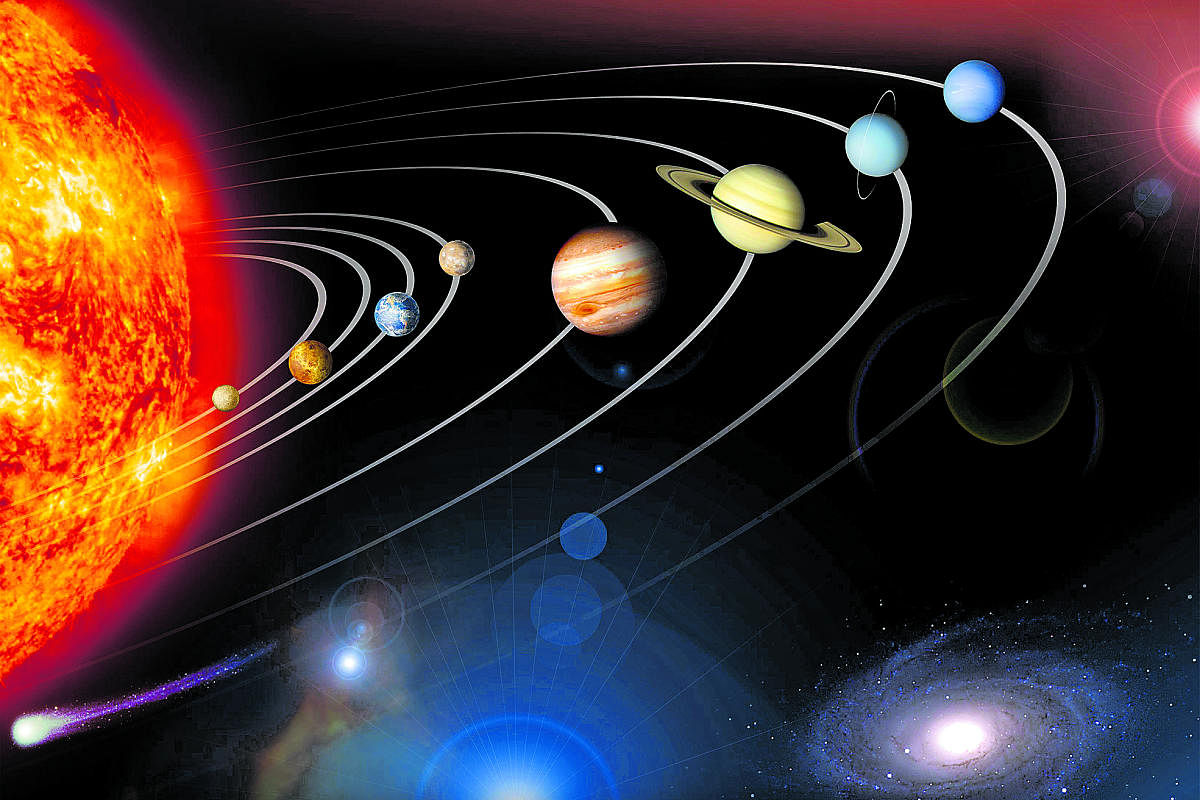
For the past few years, planetary astronomers have been extensively debating the possibility of the existence of a large planet in the outermost parts of the solar system, well beyond Pluto.
In the early 1990s, two astronomers scanning the skies for faint objects beyond Neptune found the Kuiper belt, containing thousands of objects larger than 100km across. This vast assembly of objects was dubbed the trans-Neptunian objects. It was also realised that Pluto is not the only large object in these outer reaches of the solar system. Sedna (about half the size of Pluto), Quaoar, and Eris (about Pluto-size) were found. These discoveries led to the demotion of Pluto to a dwarf planet in 2006.
Erratic orbit patterns
At the same time, observations hinted at the existence of a large planet hidden in the far reaches of the solar system. It turned out that Sedna was not moving in an expected way. This dwarf planet has a weird path swinging from 76AU to over 900AU with an orbital period of eleven thousand years, as though something is tugging it.
In 2016, Mike Brown and Konstantin Batygin proposed a massive planet about ten Earth-mass far beyond Pluto. Apart from Sedna, there were six other objects being pulled in the same direction, and each of these objects is tilted on its axis, in the same direction. The proposed ‘Planet Nine’ seems to have left its gravity imprint in the outer reaches of the solar system by distorting the orbits of objects around it with its gravitational pull. Since then the number of objects that fit the erratic orbit patterns and tilt continues to increase, presently the number being eleven. But no one has seen this hypothesised planet.
It is indeed ironic that history is now repeating itself after nearly a century. In the 1920s, many astronomers were diligently searching for a hypothetical large planet expected to be six times the Earth-mass. This was to explain the orbital anomalies of the giant planets Neptune and Uranus. Their orbits were not quite as expected even after considering perturbations of known planets. In fact, the very discovery of the planet Neptune in 1846 was based on the knowledge that the orbit of the newly discovered planet Uranus was not following Newtonian gravitational theory. It then turned out that Neptune itself was not following its predicted path.
Planet X
Many astronomers became convinced that there must be a planet beyond Neptune perturbing its path. This was dubbed Planet X. Among the most enthusiastic of the observers keen on finding Planet X was astronomer Percival Lowell, who had founded Lowell Observatory. Finally, on February 18, 1930, Clyde Tombaugh, looking at two photos of star-studded skies noticed a speck, which turned out to be Pluto, which for quite a while was considered the elusive Planet X.
It was later on felt that this was not the case, as it was not large enough to pull Neptune and distort its orbit. Later Voyager 2 in 1989, revealed that Neptune is fractionally lighter than initially thought, eliminating the need for a Planet X.
The topic has now been resurrected. Recently physicist Kevin Napier and team suggested that Planet Nine may not exist. However, his work has been criticised by astronomers as they feel the study is statistically incomplete. But the question remains: if it exists why has it not been seen. The conventional explanation is that most surveys are not looking for a single object but a class of objects. It is hoped the Subaru Telescope, located at the Mauna Kea Observatory on Hawaii, may spot it.
But there have been other suggestions as to why it has not been seen despite all these efforts.
One suggestion (by Scholtz and Unwin) is that it may not be a planet, but a primordial black hole of Neptune mass. This would make it the size of an orange. Another suggestion theorised some years ago by me with Arun Kenath and Kiren OV points out that it could be a kilometre sized object made of ultra-compact dark matter particles.
To identify and distinguish between these two ideas, suggestions have been made including looking for gamma rays or releasing a constellation of spacecraft to fly past, so that the resulting acceleration can be measured along with tidal effects and relativity effects on atomic clocks (carried by the crafts). With all these attempts, the question of whether Planet Nine exists or not can hopefully be answered soon, one way or another.
(The author is with Indian Institute of Astrophysics, Bengaluru)